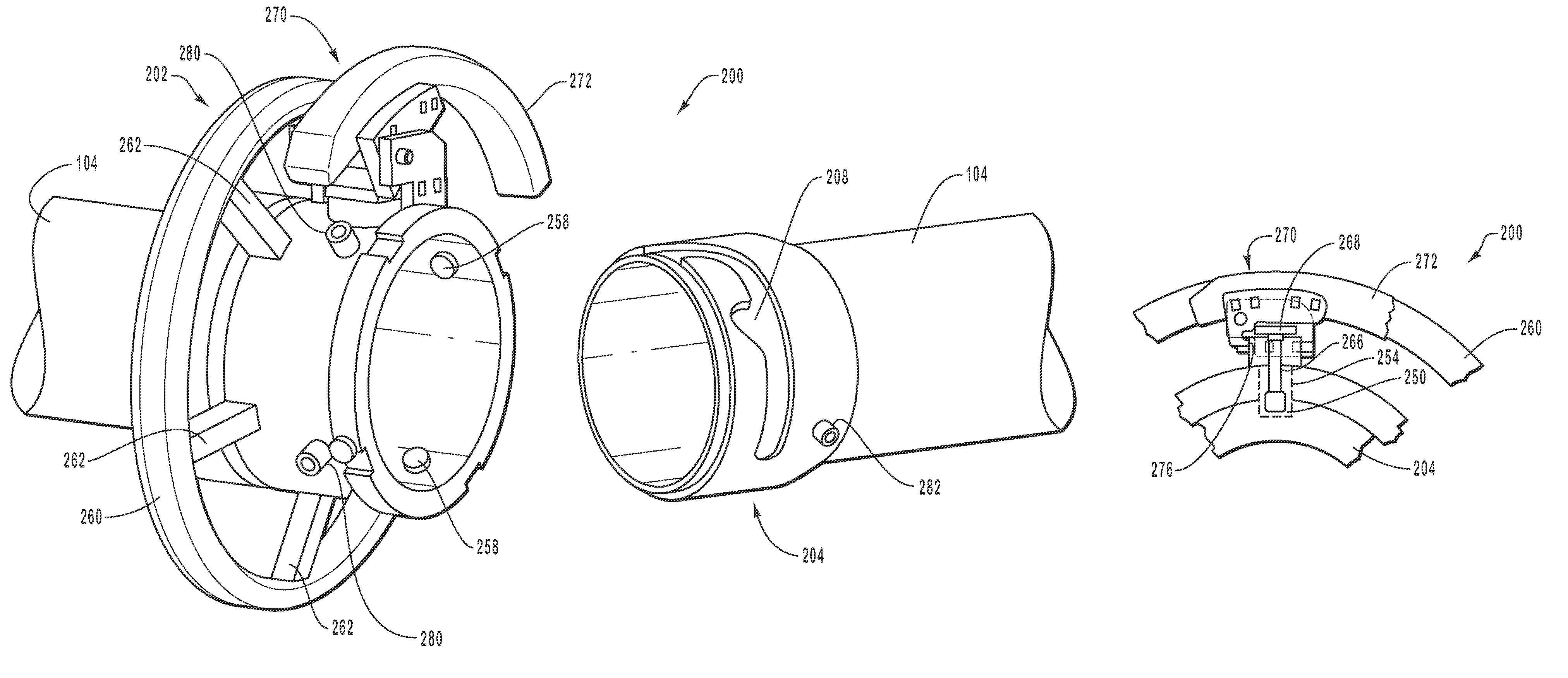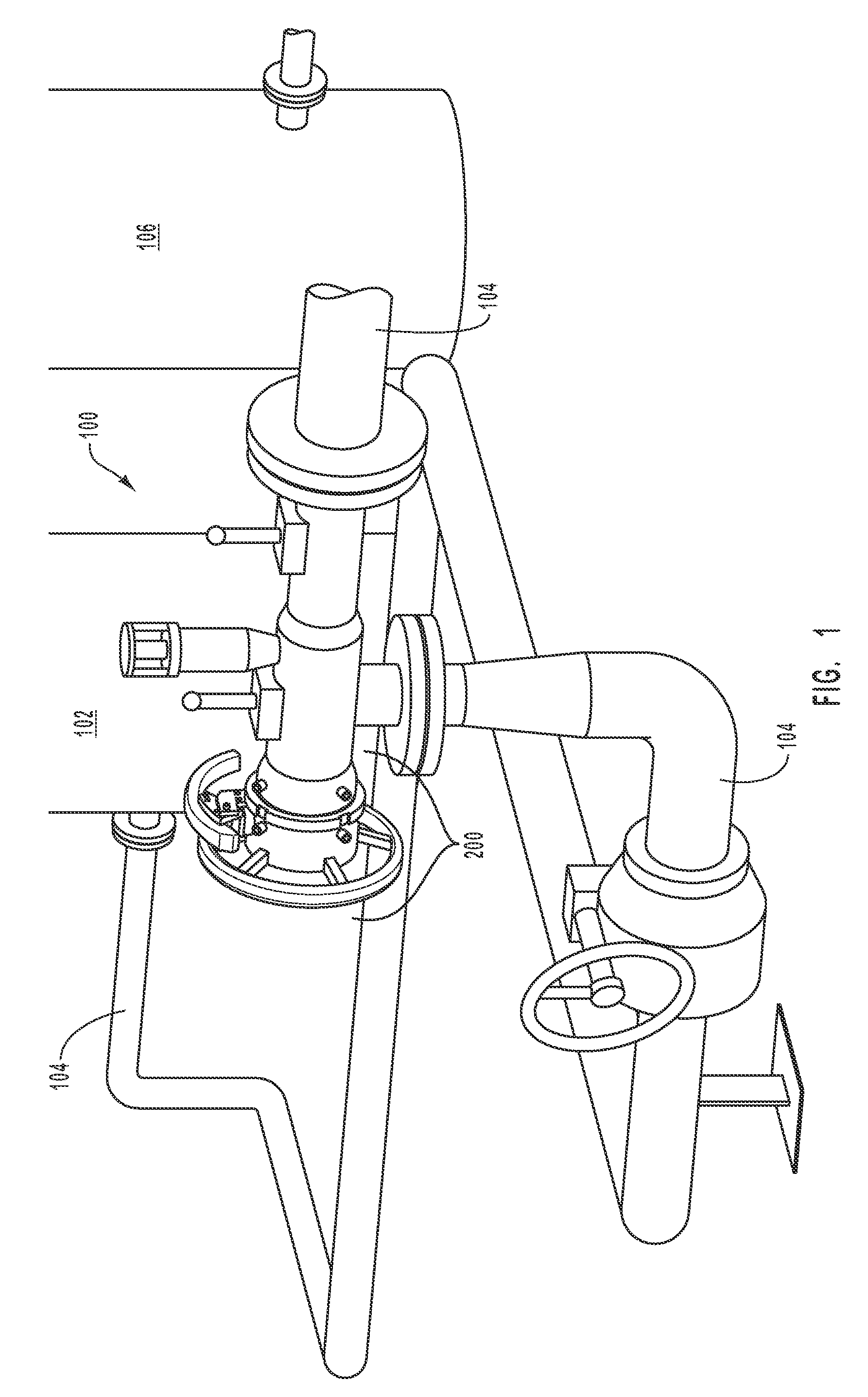Fluid system coupling with pivoting handle actuating member
a technology of pivoting handle and pivoting handle, which is applied in the direction of couplings, pipe elements, sleeve/socket joints, etc., can solve the problems of wasting resources, difficulty in transporting fluid, and significant damage, and achieves convenient disengagement, facilitates secure engagement, and prevents intentional or accidental disengagement of the mating halves
- Summary
- Abstract
- Description
- Claims
- Application Information
AI Technical Summary
Benefits of technology
Problems solved by technology
Method used
Image
Examples
Embodiment Construction
[0040]Reference will now be made to figures wherein like structures will be provided with like reference designations. It is to be understood that the drawings are diagrammatic and schematic representations of various embodiments of the invention, and are not to be construed as limiting the present invention, nor are the drawings necessarily drawn to scale.
[0041]With reference first to FIG. 1, a portion of one embodiment of a fluid system is indicated generally at 100. Note that, as contemplated herein, “fluid” is not limited to liquids, but can include a variety of other compositions. For example, the term “fluid,” as used herein, expressly includes liquids, gases, liquid-gas combinations, slurries, liquid-solid combinations, gas-solid combinations, and liquid-solid-gas combinations. In the exemplary embodiment depicted in FIG. 1, fluid system 100 includes a fluid source 102 in fluid communication with one or more fluid conduits 104. According to some example embodiments at least o...
PUM
 Login to View More
Login to View More Abstract
Description
Claims
Application Information
 Login to View More
Login to View More - R&D
- Intellectual Property
- Life Sciences
- Materials
- Tech Scout
- Unparalleled Data Quality
- Higher Quality Content
- 60% Fewer Hallucinations
Browse by: Latest US Patents, China's latest patents, Technical Efficacy Thesaurus, Application Domain, Technology Topic, Popular Technical Reports.
© 2025 PatSnap. All rights reserved.Legal|Privacy policy|Modern Slavery Act Transparency Statement|Sitemap|About US| Contact US: help@patsnap.com



